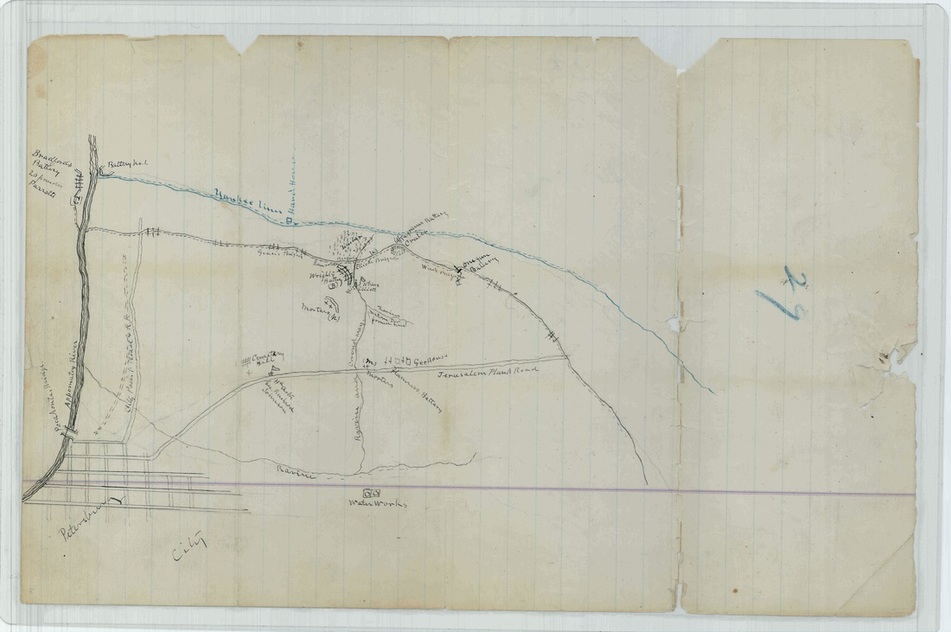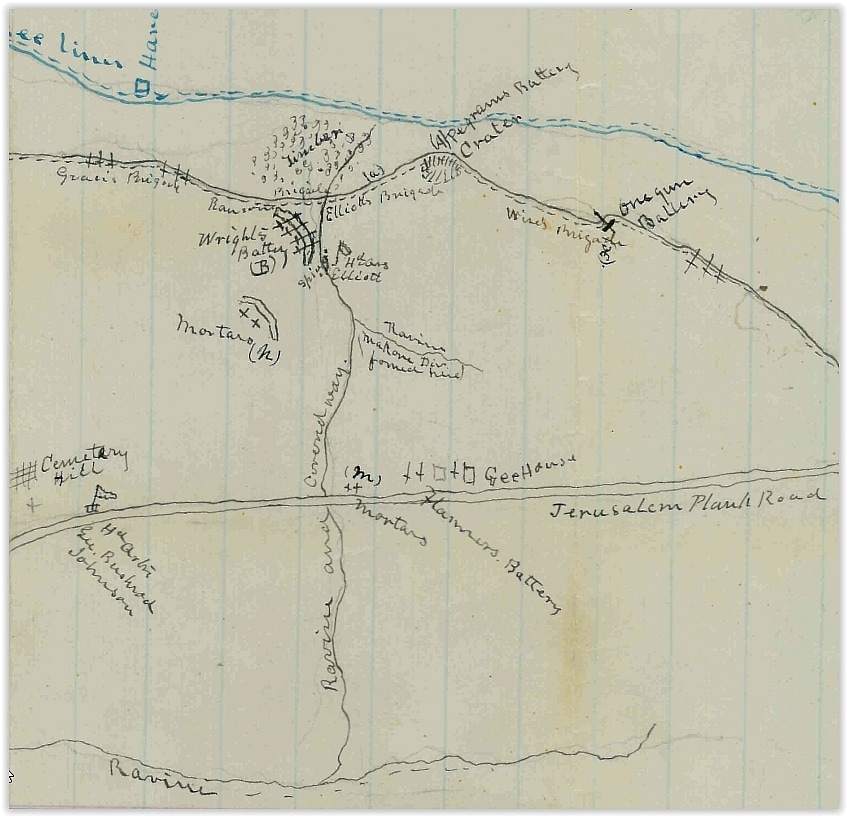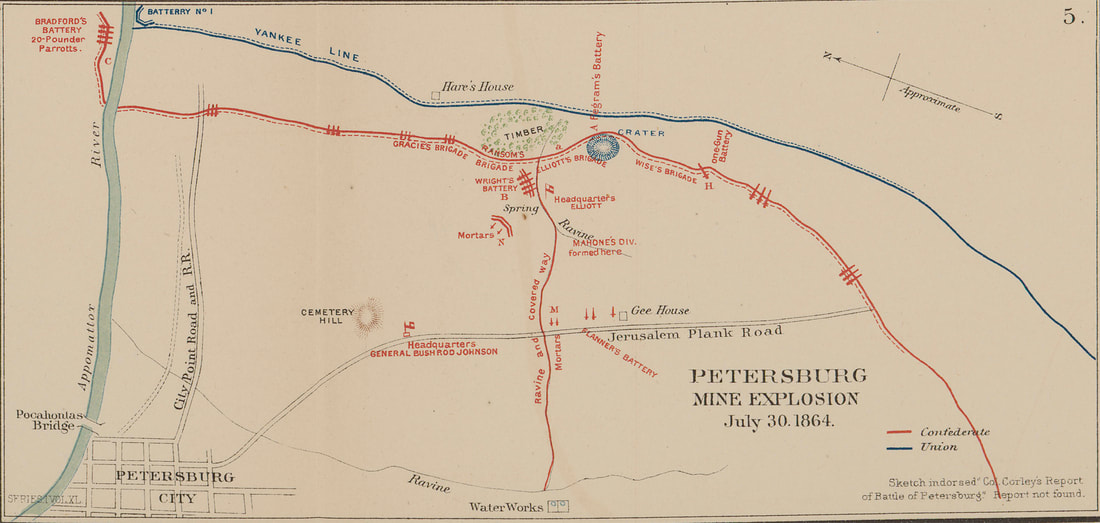Letter from Major J. C. Coit to Colonel F.W. McMaster, August 2, 1879
In Southern Historical Society Papers, Vol. 10, 124-125
The salient marked A, when the mine was exploded, was occupied by Pegram's battery, four guns. The battery to the left of the crater, marked B, was Wright's, of Halifax, Va., four guns. The battery marked C, on north side of Appomattox, was Bradford's, of Mississippi, four 20-pounder Parrotts.
This battery was opposite the enemy's battery No. 1, and was intended to enfilade their lines as far as the Hare house and beyond.
I see by the May No., 1878, Southern Historical papers that Captain Flanner's North Carolina battery occupied that position. General Bushrod Johnson's headquarters was upon the Jerusalem plank road, near the cemetery, and is marked in the sketch, General Elliott's and my own near the spring on the covered way, in rear of his brigade.
The artillery to the left of Wright's battery, and to the right of the one gun battery on the right of the crater, may have thrown a few shot into the enemy's lines in their front, but took no part in the engagement at the crater. During the day some artillery was brought from the right or rear and placed in position on Cemetery hill, but took no part in the engagement. The only artillery actually engaged was Wright's battery, the battery at the Gee house, and the two mortar batteries marked on sketch M, and the one gun battery to the right of crater (F C). The ravine in which General Mahone formed his division, before making the charge upon the crater, is shown in the sketch to the rear of Elliott's Headquarters, and extending out from the covered way in a direction between the crater and the Plank road.
In Southern Historical Society Papers, Vol. 10, 124-125
The salient marked A, when the mine was exploded, was occupied by Pegram's battery, four guns. The battery to the left of the crater, marked B, was Wright's, of Halifax, Va., four guns. The battery marked C, on north side of Appomattox, was Bradford's, of Mississippi, four 20-pounder Parrotts.
This battery was opposite the enemy's battery No. 1, and was intended to enfilade their lines as far as the Hare house and beyond.
I see by the May No., 1878, Southern Historical papers that Captain Flanner's North Carolina battery occupied that position. General Bushrod Johnson's headquarters was upon the Jerusalem plank road, near the cemetery, and is marked in the sketch, General Elliott's and my own near the spring on the covered way, in rear of his brigade.
The artillery to the left of Wright's battery, and to the right of the one gun battery on the right of the crater, may have thrown a few shot into the enemy's lines in their front, but took no part in the engagement at the crater. During the day some artillery was brought from the right or rear and placed in position on Cemetery hill, but took no part in the engagement. The only artillery actually engaged was Wright's battery, the battery at the Gee house, and the two mortar batteries marked on sketch M, and the one gun battery to the right of crater (F C). The ravine in which General Mahone formed his division, before making the charge upon the crater, is shown in the sketch to the rear of Elliott's Headquarters, and extending out from the covered way in a direction between the crater and the Plank road.




